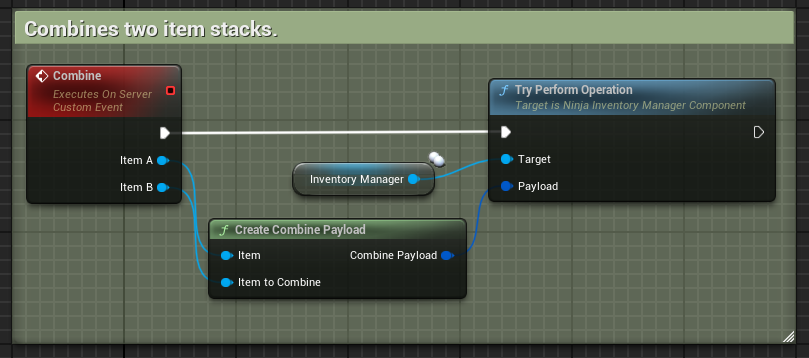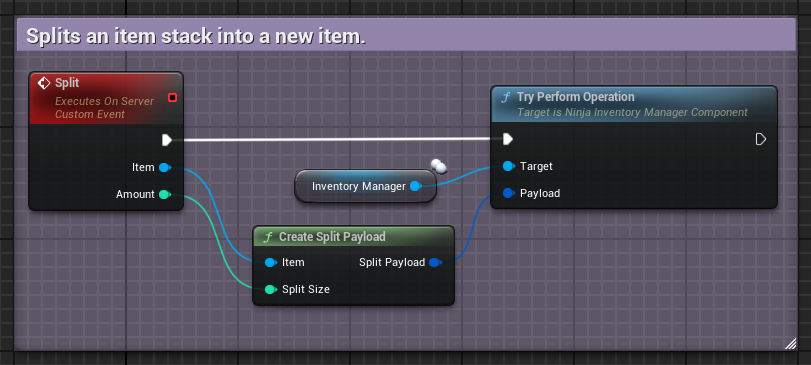Stack
Last modified: 05 December 2024Manages the stack and storage limits. Provides the Combine and Split operations.
note
You should always have a Stack fragment in your items, even if it's just to set storage limits!
Modifying Requests
Since it implements IItemContextModifierInterface, this fragment is invoked for every item added to the inventory, to ensure the request is properly split in correct stack sizes, and optionally that incomplete stacks in the inventory can be filled first, before creating new items.
Everything happens automatically, and you don't need to worry about it, but if the item cannot be placed, then it will be marked for a drop and additional information will be available in the logs, under the LogNinjaInventory category.
Fragment Synergies
The Stack Fragment has an indirect synergy with the Container Fragment. Since additional item stacks can be created from new items being added to the inventory, these should also be modified by the Container Fragment, so make sure to always add your Stack Fragment before the Container Fragment.
the Stack Fragment also has a more direct synergy with the Pickup Fragment, as it will deliberately mark items to be dropped when they cannot be properly added to the inventory. The presence of the Pickup Fragment will even influence a new stack being allowed into the inventory.
Item Limits
Even if items are not stackable, you can use the Stack Fragment to define their maximum limits in the inventory. When items reach that limit, attempts to adding new items will most likely result in an item being dropped.
Merging New Items
You can choose to automatically merge new items being added to the inventory. This means that incomplete stacks will be reused, before new items can be created.
You can enable this behavior by toggling the Automatically Merge New Items property either in the Inventory Settings or per-item, in the Stack Fragment added to the Item Definition.
Strict Stacks
Another flexible behavior provided by the Stack Fragment is the ability to decide if the inventory will only add items that can have their entire stack received, dropping the entire stack otherwise.
If disabled, then the amount that can be received will be added to the inventory and the remainder will be dropped.
Combine Operation
This fragment provides the Combine operation, which can be created via the CreateCombinePayload function. It moves It combines two items, merging their stacks and leaving behind any leftovers in the original item.

void UInventoryExamples::Combine(UNinjaInventoryItem* ItemA, UNinjaInventoryItem* ItemB)
{
const TInstancedStruct<FInventoryFragmentPayload>& Payload = UNinjaInventoryGameplayFunctionLibrary::CreateCombinePayload(ItemA, ItemB);
InventoryManager->TryPerformOperation(Payload);
}Split Operation
This fragment provides the Split operation, which can be created via the CreateSplitPayload function. It splits a given item's stack, creating a new item with the requested stack size.
tip
The new item will go through the regular
AddItemflow in the Inventory Manager. Fragments that can modify new items, such as the Container Fragment, will execute normally.However, the Stack Fragment recognizes items being added from a Split operation, and it won't try to merge stacks automatically.

void UInventoryExamples::Split(UNinjaInventoryItem* Item, int32 Amount)
{
const TInstancedStruct<FInventoryFragmentPayload>& Payload = UNinjaInventoryGameplayFunctionLibrary::CreateStackPayload(Item, Amount);
InventoryManager->TryPerformOperation(Payload);
}